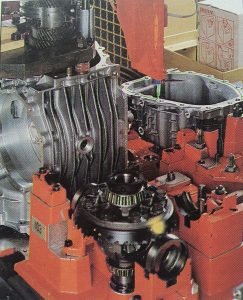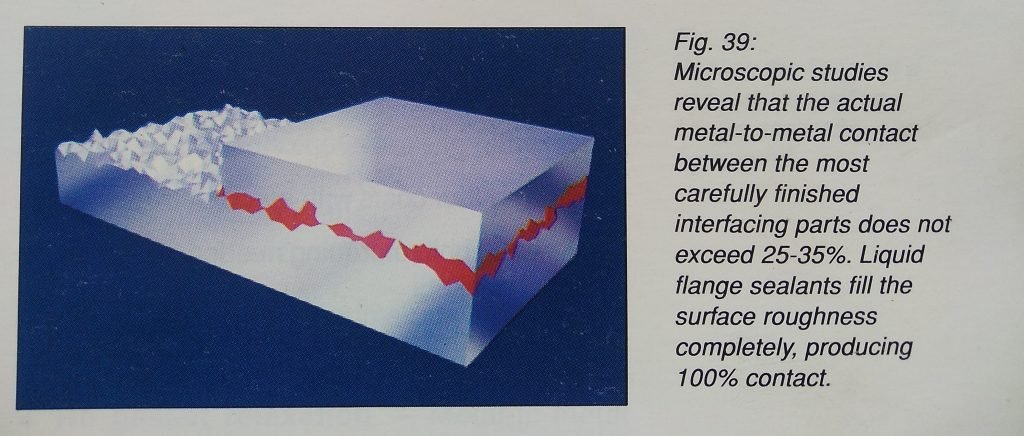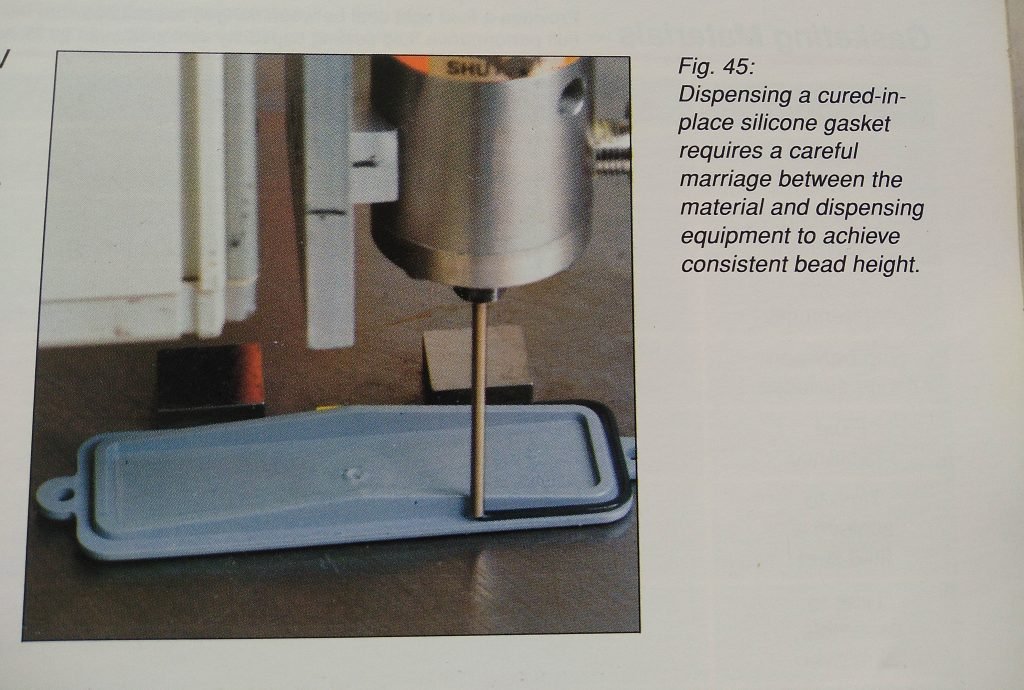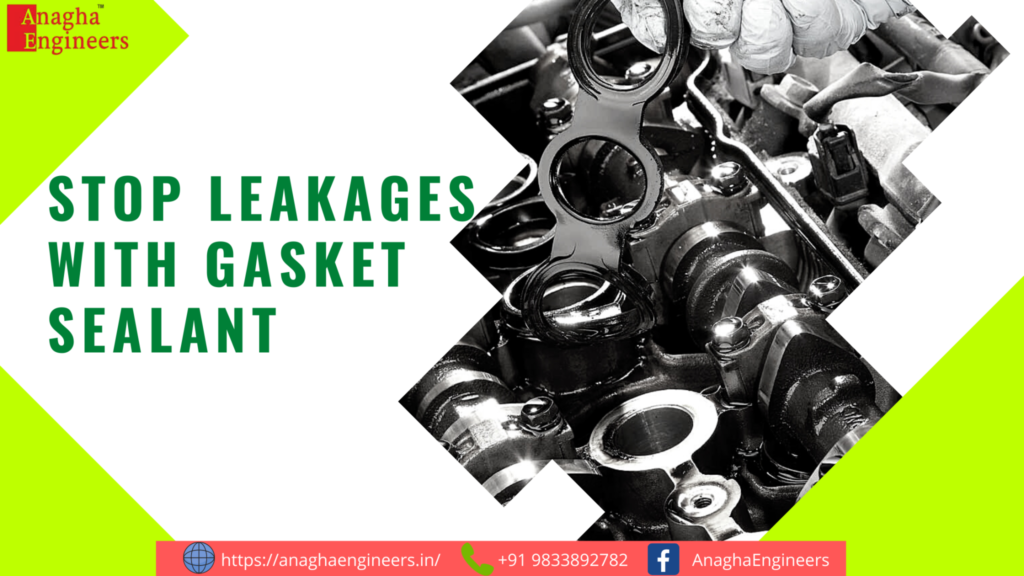Why Liquid Gasket?
- types of flange gaskets
- advantage of gasket sealant over traditional solid gaskets
- Why solid gaskets fail
- RTV Silicone gasket sealant
- advantages and llimitations
- Design considerations for optimum performance of RTV Silicone gasket sealant.
Fluid seals are divided into static & dynamic systems, depending on whether or not the
parts move in relationship to each other. flanges are classified as static systems although they move because of vibrations, temperature and or presuure changes, shock, impact, etc.

Types of liquid gasket sealant There are three types of flange gaskets:
- conventional compression gaskets of cork, paper, rubber, metal and other asbestos free materials:
- “Cured in place” liquid compression gaskets cure in seconds with ultraviolet light prior to assembly( CIP)
- ” Formed in place” liquid gaskets cured after the parts are assembled ( FIP)
- Create seals
- maintain seals
- remain impervious to fluid flow, no leakage
- remain compatible with the machinery
Many factors influence gasket choice. FIP silicone gaskets are well suited for low pressure joints with large gap potential such as stamped metal cover plates ; FIP anaerobic gaskets seal high pressure joints when both surfaces are rigid. Cured in place gaskets are ideal for sealing joints which may be frequently serviced.
Formed in place flange sealant
Advantages of liquid sealant over pre-cut compression gaskets
Improved reliability
- seals all surface imperfections, 100% leakage free
- allows true ” metal to metal” designs
- reduce compression set and fastener loosening
- anaerobic gaskets can add to structural strength to assemblies
- unitizes assembly to improve torque transmission between bolted flanged joints
Reduced costs
- relaxed machining tolerances
- eliminate gasket
- reduce labour costs with automatic application
- eliminate bolt retorquing needed with conventional gaskets
- allow use of smaller fasteners and lighter flanges
Easier application
- single component materials no mixing
- applied semi- or fully – automatic
- vertical and horizontal appplications possible
Easier service
- FIP Gaskets offer easy disassembly and clean up
- FIP service packages offer multiple application on flanges of any size.
Why traditional solid gaskets fail
Compression gaskets require an initial compressive load to deform the gasket into the irregularities of the flange surfaces. They therefore must carry the bolt load. The major causes of failure and leakage of compression gaskets are:
- Compression set – over time, the gasket loses its elastic properties and becomes less resilent. The load on the gasket and relative motion causes a geeneral decrease in the thickness of gasket , with subsequent leakage.
- Flange bowing – The area where the joint is most likely to leak is at the center of the flange where the smallest compression is produced by the bolts. This is where the maximum bending occurs from the internal pressure.
- Extrusion– Gaskets can be squeezed out between flanges by a combination of low compression ( less than the minimum sealing stress) on the gasket and internal pressure of the system.
- Bolt hole distortion – High stresses are transferred to the gasket material under the bolt head causing the gasket to crack, tear, rupture or extrude.
RTV Silicone FIP liquid gasket sealant
 RTV Silicone materials cure by reacting with atmospheric moisture.
RTV Silicone materials cure by reacting with atmospheric moisture.
Silicone RTV gaskets are beads applied to the flange area of a component. Assembly should happen within 10 minutes. Silicone compounds flow to form gaskets that completely fill voids, surface imperfections, scratches and out of flat conditions, etc. They provide a smal out amount of ‘sqeeze out’ both on the inside and outside of the joint. The excess squeezed out past the edges of the flange forms a fillet acting as a secondary seal. RTV silicone materials contain no solvents. Conversion from liquid to solid is virtually 100%, eliminating all potential leak paths.
Benefits of FIP Silicone liquid Gasket over other materials
- Seal large gaps- RTV silicone materials seal large gaps upto 6 mm.
- Flex with flange movement – Silicones have high elongation properties upto 600%, permitting them to move in joints with high differential thermal expansion or flexible flanges.
- Relaxed surface finish- Silicone gasketing materials allow relaxation of surface finish and flatness tolerances. In some cases, large gap filling capabilities allow these materials to be used on ‘as cast’ surfaces.
- Inventory cost reduction- Silicones eliminate the need for large and costly gasket inventories.
- Temperature range – RTV Silicone have a temperature range between – 70 C to + 260 C with intermittent exposure to + 315 C.
- Adhesion- RTV Silicone materials adheres well to many surfaces.
- 100% successful to stop leak / oil seepage
Limitations of FIP Silicone gasket materials
- Chemical compatibility- RTV Silicones are limited to sealing oil, coolant and air. They have poor resistance to fuel and aromatic solvents.
- High pressure- Silicones are not well suited toheavily stressed or high pressure applications due to high elongation and low tensile and shear strength
RTV gasket flange – gasketing design considerations
Successful designs with RTV FIP gaskets use the following parameters.
Flange Design
The RTV Silicone joint should be a single plane sealing surface. In cases a single plane sealing surface does not exist ( such as oil pan arches or half rounds), avoid the use of RTV silicone or use a moulded rubber insert in the arch. The flange should have a minimum width of 15-20 mm. For stamppings and non structural components, stands offs are used witha height of 0.5 to 1.25 mm. If stand offs are not used or the component is a structural member, then retention grooves are used. The retention groove is usually stamped or cast into one flange and the other flange is flat. The cross sectional shape of the retention groove is a circular segment which runs the length of flange starting & stopping at each bolt hole. Typical dimesion of the flange- kindly contact us for the same.
Bolt Span
Surface cleanliness is critical to successful jont seals. RTV silicone gaskets seal by adhesion , not compression, so it is necessary to assemble joints before the rtv material skins over. Adhesion must be maintained as the flanges move for the life of the joint.
More about leakage free gasket sealant technology
- Where can the flange sealant be used, some popular uses of gasket sealants.
- How to use or apply the gasket sealant
- Common mistakes to avoid while using a gasket maker.
- What is a gasket dressing compound. How to use the sealant where we cannot replace a solid gasket due to product design.
- How to disassemble assemblies sealed with liquid gasket sealer?
- How to reapply silicone gasket sealer to stop leak.
We will discuss these topics in our coming blogs. In the meanwhle you can contact us for any queries related to adhesive and sealant technolgy whatsoever



1 thought on “Stop leak with Supex Liquid gasket”
The article is well written